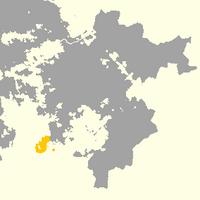Punanish language: Difference between revisions
mNo edit summary |
mNo edit summary |
||
| Line 12: | Line 12: | ||
| fam1 = {{wp|Indo-European languages|Indo-Iraian languages}} | | fam1 = {{wp|Indo-European languages|Indo-Iraian languages}} | ||
| fam2 = {{wp|Celtic languages|Foranic}} | | fam2 = {{wp|Celtic languages|Foranic}} | ||
| fam3 = {{wp|Insular Celtic languages| | | fam3 = {{wp|Insular Celtic languages|Island Foranic}} | ||
| fam4 = {{wp|Goidelic languages|Goidelic}} | | fam4 = {{wp|Goidelic languages|Goidelic}} | ||
| script = {{wp|Latin alphabet|Setentrian}} ([[Punanish language#Orthography|Punanish alphabet]]<br>{{wp|Runes}} ''(formerly)'' | | script = {{wp|Latin alphabet|Setentrian}} ([[Punanish language#Orthography|Punanish alphabet]]<br>{{wp|Runes}} ''(formerly)'' | ||
Revision as of 09:03, 7 January 2020
| Punanish | |
|---|---|
| tsjenge døyne | |
| Pronunciation | [tʃeŋə døʏ̯nə] |
| Native to | Velsken |
| Region | Punania, Velkjaland |
| Ethnicity | Punanish |
| Extinct | 7 January 2009, with the death of Ethny Tiannagh |
| Revival | ~200 L2 speakers ~1,500 at A1-A2 |
| Setentrian (Punanish alphabet Runes (formerly) | |
| Official status | |
Official language in | None |
| Regulated by | Comeirle na døynen (Council for the Language) |
| Language codes | |
| ISO 639-1 | td |
| ISO 639-2 | tsd |
| ISO 639-3 | tsd |
| ISO 639-6 | gtsd (historical) |
| Linguasphere | 50-AAA-ah |
 | |
Punanish (Punanic: tsjenge døyne, IPA: [tʃeŋə døʏ̯nə]) is a Foranic language, closely related to Eilnish of Crethia and other Island Foranic languages spoken in Dysia. It is the native language of the Punanish, a Foranic people inhabting part of southern Velkjanland in Velsken. The language has officially been declared dead died in 2005 with the death of Øynges Tiannagh, though it wasn't until the death of his cousin and claimed last native speaker Ethny Tiannagh four years later in 2009 that it has been truly extinct.
The impending death of the language has sparked a renewed interest in Punenish, people of Punanish descent, and some non-Punanish Velskeni inhabitants of traditional Punania, allowing for the revival of the language. Punanish is promoted by the Punanish Cultural Association, an organisation of mostly young Punanish people. As of 2020, there are an estimated 200 second-language speakers of Punanish, with an additional 1500 learners. Since 2013, the language has started to be taught in universities in Velsken, and in Crethia from 2018, increasing the number of second-language speakers who do not permanently reside in Velsken.